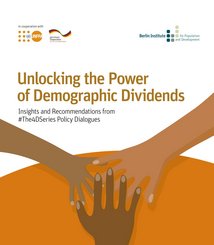
This report highlights the potential of targeted population policies to achieve demographic dividends.
Read more
Ethiopia is one of the world’s least developed countries. Yet over the past two decades, the country has made extraordinary progress. Targeted investment in health, education and employment has improved living standards and triggered a rapid decline in the fertility rate. If it succeeds in consolidating these achievements, Ethiopia could become one of the first Sub-Saharan countries to benefit from a “demographic dividend” and demonstrate how development can work in Africa. Hopes are now pinned on the young prime minister, Abiy Ahmed, to introduce the necessary reforms and measures to break out of the vicious circle of poverty and rapid population growth. The study shows which factors have helped Ethiopia along its development path and which challenges it still needs to overcome in order to become a model country on the African continent.
The Berlin Institute would like to thank the Austrian Development Agency (ADA) for funding the project with funds from the Austrian Development Cooperation, as well as the DEG – Deutsche Investitions- und Entwicklungsgesellschaft mbH and the GfK Verein for financial support.
Demographic change is not a disaster, but a challenge. Analyses and concepts are needed to master them successfully. The Berlin Institute for Population and Development provides these free of charge and makes a significant contribution to ensuring that important future issues are discussed on a broad basis and put on the political agenda. The non-profit Berlin Institute works on a non-partisan basis and receives no state funding whatsoever. Your donation therefore helps to maintain our independence and the high standard of our publications. Donations to the Berlin Institute are tax-deductible and can be made directly online using the donation button or by using a bank transfer form to the following account
Donation account
GLS Bank
IBAN DE15 4306 0967 1276 4833 00
BIC/SWIFT GENODEM1GLS
We thank you very much for your support!